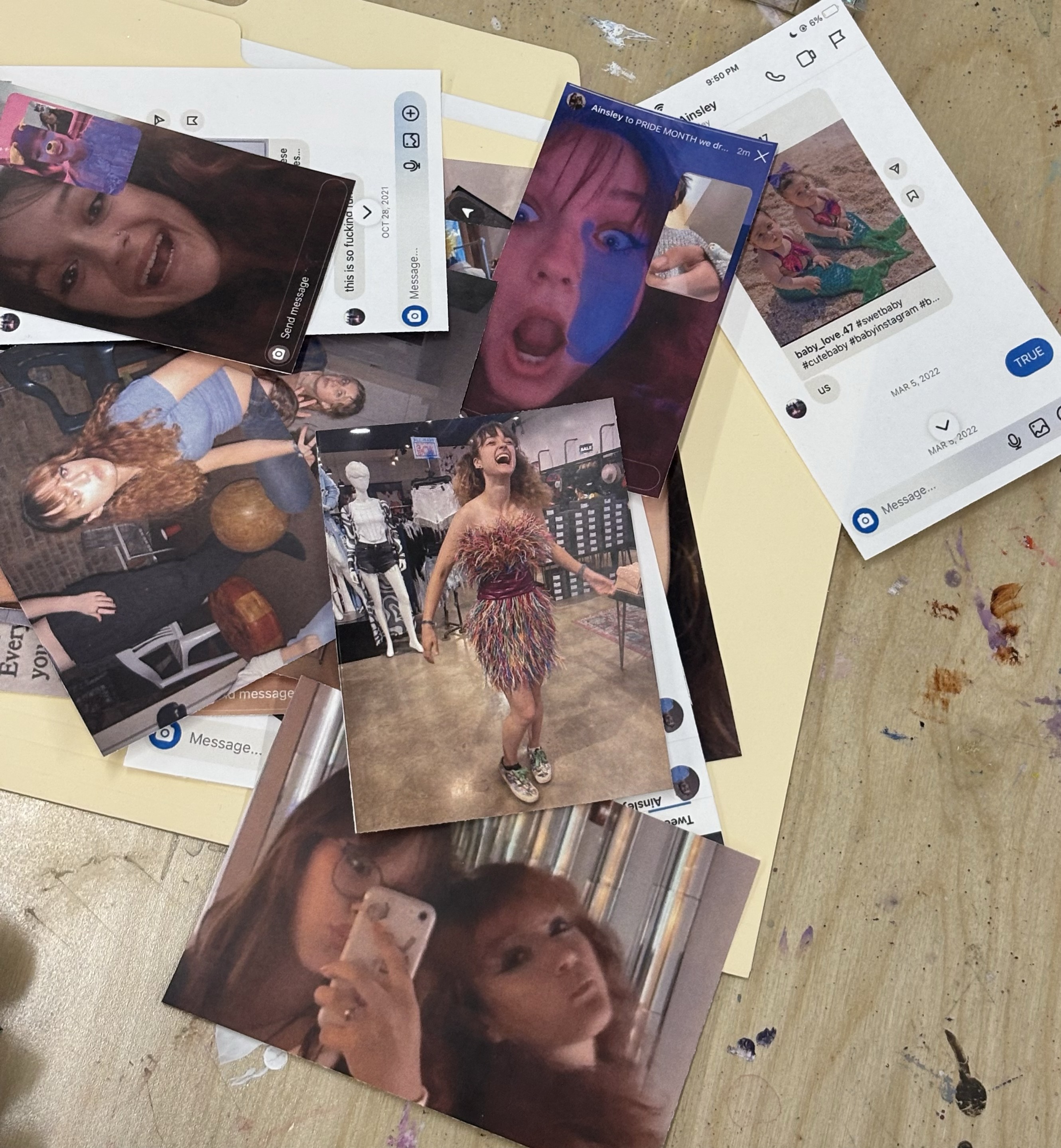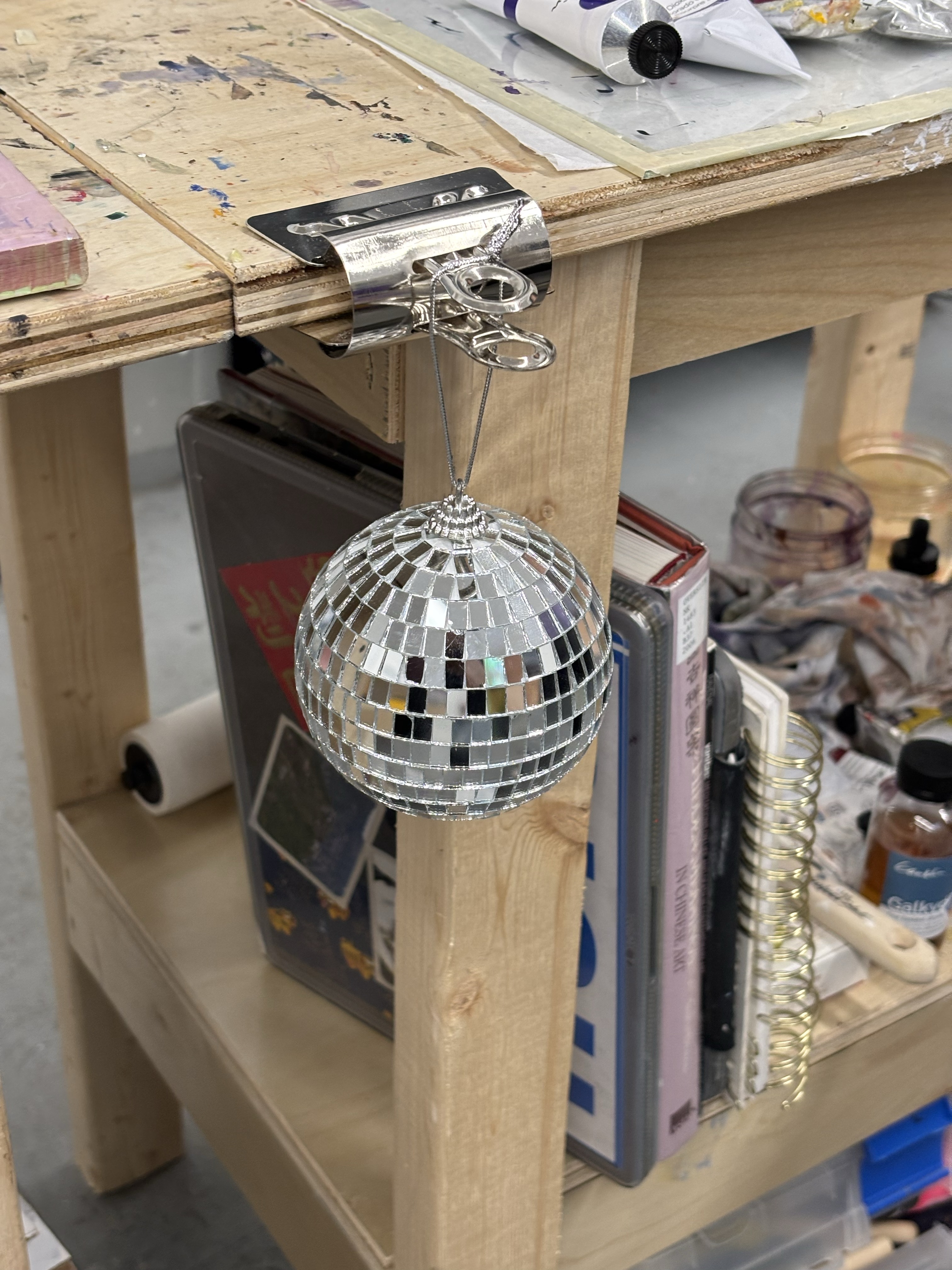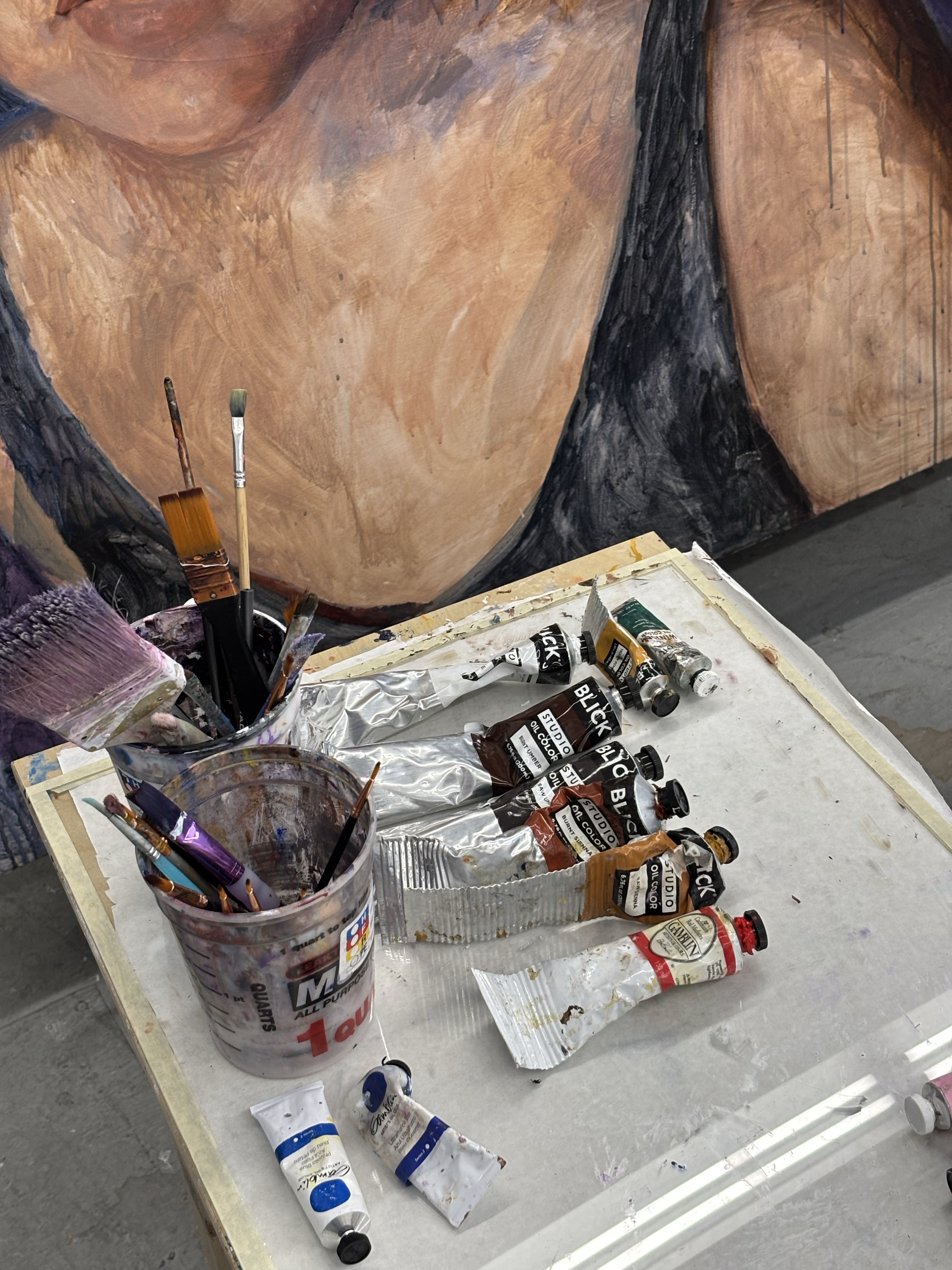STARCHIVE: June Ahleman
STARCHIVE: June Ahleman
Nino Chambers
→MFA FD 2025
June Ahleman
→BFA PT 2027
April 4th, 2025, 6:30 PM
I met June Ahleman in her light-filled sophomore painting studio for a candid conversation about her large-scale work and what it means to process grief as an artist.
 All photos by Nino Chambers
All photos by Nino ChambersNC Tell me about the project you just finished.
JA I tried something new—doubling myself in a painting. Most of my work is about grief, especially about my friend Ainsley. I hadn’t painted her much before because she was always moving in photos, laughing, dancing and jumping up and down. I’ve been working from still images she sent on Instagram and exploring different ways to translate one photo in particular to accurately represent her.
NC How has your approach to painting changed since her death?
JA Before Ainsley passed, my art focused on identity, especially my biracial, Asian American identity. I was interested in how portraiture can objectify people, so to avoid that, I combined audio installations with paintings, allowing people to tell their own stories—whether about race or whatever mattered most to them.
After losing Ainsley, I shifted. My focus is now more on how exper-ience informs identity. My work is still about honoring a person’s full presence, it’s just that now I’m navigating how to do that when someone is no longer here. My experiences are what have impacted my identity the most.
NC Do you usually paint from reference photos?
JA Always. I’m really interested in how photographs interact with memory. Especially now, because of technology, photos have become almost like an extension of ourselves. There's a tendency to trust a photo more than memory.
NC Would you describe your work as archival?
JA In a way, yes. I always tried to capture a whole person, which is why I used audio. But when someone’s no longer here, it’s different. There’s more pressure to represent them accurately. At first, my work was more about my grief. Now I’m trying to reflect who Ainsley really was—funny, full of energy, always dancing and wearing glitter. She loved purple and party lights, so I include those in my work. As an artist I’m really lucky that I get to process my grief for so long, especially because, you know, not everyone gets to constantly honor the person they’ve lost, so I feel very grateful that I am able to come into studio thinking about her and I don't have to stop thinking about her when I start painting.
NC Is it difficult to paint someone so full of life within your own aesthetic?
JA I paint her so often that her vibe has kind of merged with mine—glitter, color, disco lights. I wear glitter on my face every day. It’s part of my daily ritual now, like she’s always with me.
NC What's your favorite part of the creative process and your least favorite part of the creative process?
JA Noses. I always start with the nose. Least favorite? Probably foreheads. I want to explore painting spaces more, especially with this “other room” idea, but I just love faces.
NC What draws you to painting skin?
JA I just love it. Everyone’s face is so different, and skin is full of subtle tones—get the nose slightly wrong, and it becomes someone else. I’ve been influenced by Jenny Saville since middle school. She paints with a lot of fleshy colors. She's been one of my favorite artists since then.
NC Where are you from?
JA I'm from Evanston, Illinois, and my high school was in Chicago. I think I’m more shaped by people than places—family and friends. The setting is really just the people in it.
NC When did you start painting like this?
JA I was always making things, but I didn't start painting in the way I paint now until, I would say like, junior year of high school. I started painting bigger when I was in senior year.

NC What has painting taught you about grief?
JA That it’s ongoing. People often reach out to me because my work is about loss, and I’m always open to listening. One poem stuck with me, it said, “Death is nothing at all, I’m just in the other room.” I think about that constantly. A lot of my recent work plays with that idea, like weaving tinsel into a piece that you can look through, like a window to another room.
Lately, my self-portraits have become more about my grief. I came across a quote after she passed that said “love and grief are two homes with the same painting on the wall.” This piece has two rooms and each room has a painting in the background—one love and one grief.
NC What does a day at RISD look like for you?
JA I usually paint all day, before, during and after class. I take walks in between, but I’m mostly in the studio.
NC Walk me through your process.
JA I paint mostly in one thin layer, using a lot of medium so the brush-strokes and light come through. I like that sense of transparency. I always paint with music—usually her music. She loved Drain Gang and 100 Gecs. Listening while I paint feels like being with her.
NC What would you say to Ainsley today?
JA I miss her. I still want to FaceTime her. That urge never goes away. I see things and want to send them to her. Instead, I put them in my work. I read something about grief that said “don't change your tone when you're talking about me.” Everyone who knows me knows who she is now, even if they never met her. She’s part of my life.

NC What inspires you outside of art?
JA Sparkly stuff. Glitter, disco lights, stars on the sidewalk—little things that remind me of Ainsley. Weirdly, because of the online nature of everything, it is easier to remember some of our interactions. I still look at her online accounts and all of her funny posts are still totally relevant. It kind of gives me the privilege to still be able to laugh with her.

NC What would you be doing if not painting?
JA Probably still something creative. I used to sew all my clothes. I made this bag from fabric I found on the street. It's really hard for me to imagine not making.
NC Final thoughts?
JA The thing with grief is that everyone deals with it so differently. I’m okay with any way someone wants to interpret my work. I knew art was really important to me, but I don't think I realized how much of a tangible impact my work could make on others. So when I hear from people that my paintings helped in any way, it’s such an honor to me and that's what keeps me going.

Nino Chambers is ordering from McMaster-Carr everyday.
June Ahleman is covered in glitter.